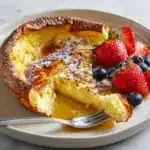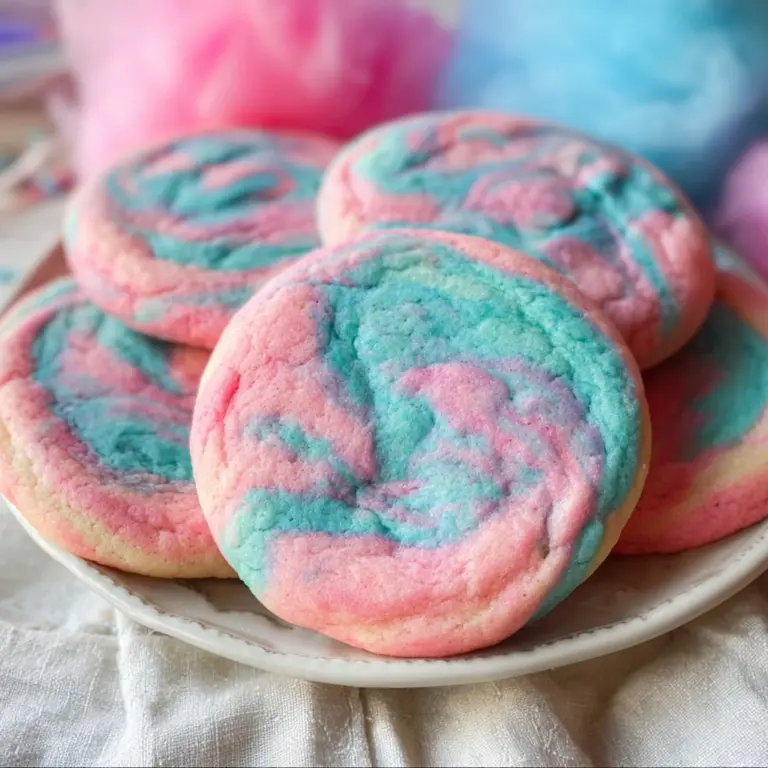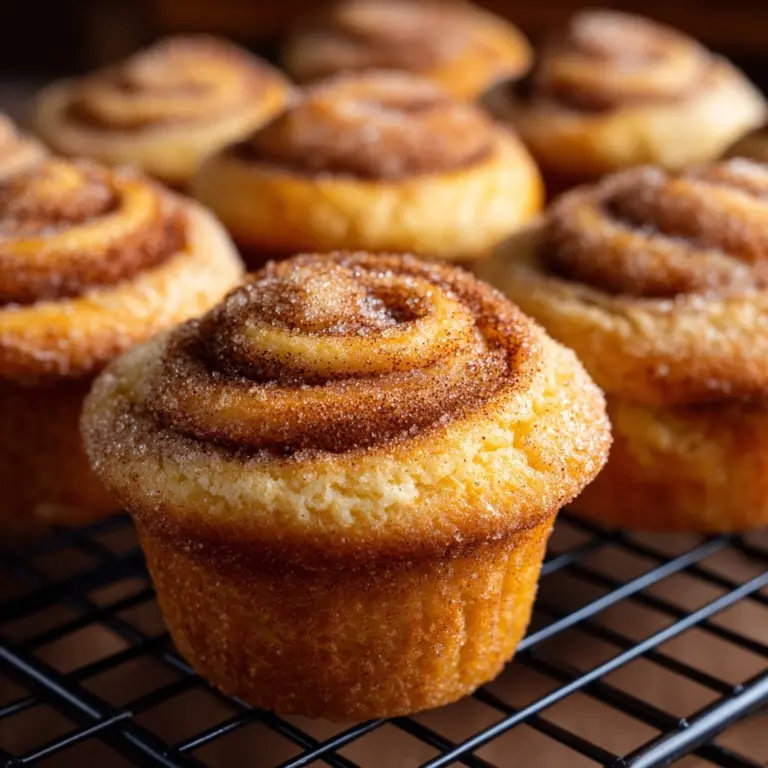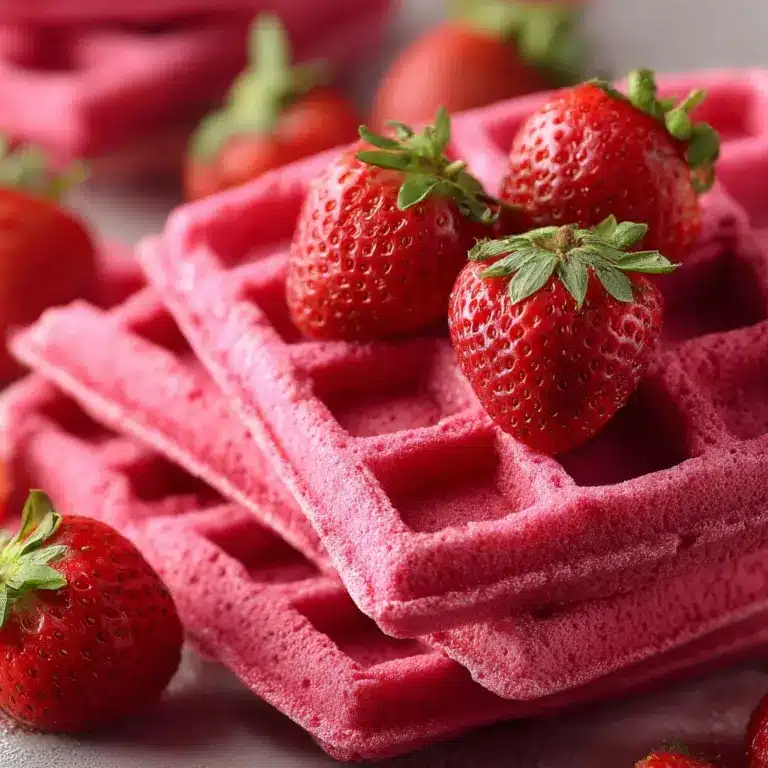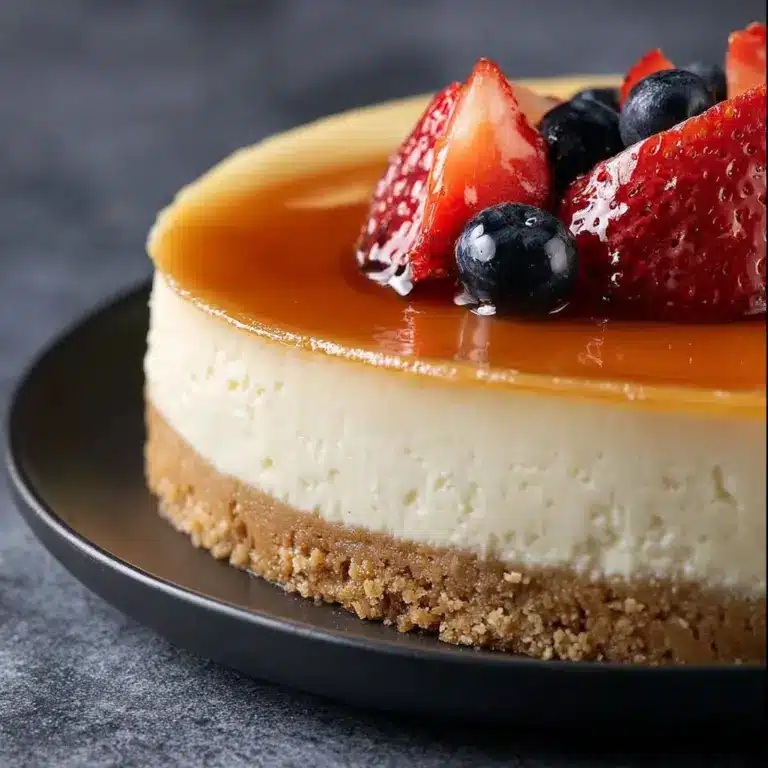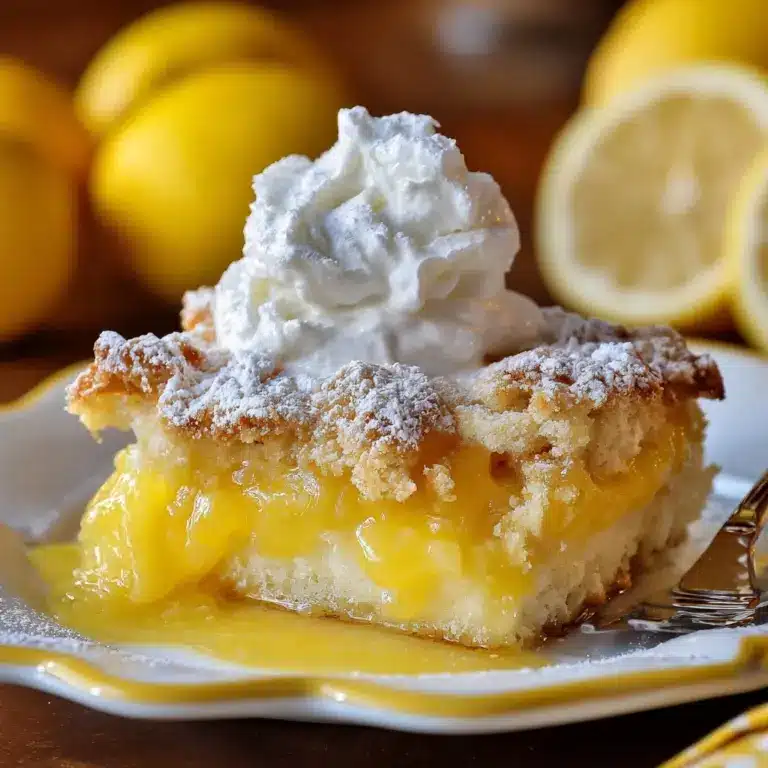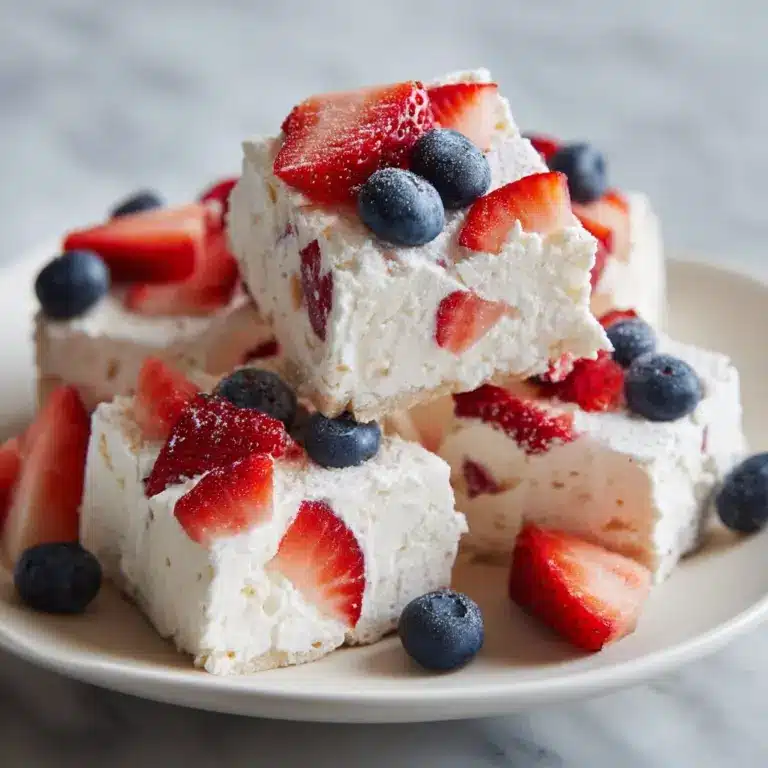German Pancakes Recipe
If you’ve never experienced the magical transformation that happens when you bake German Pancakes, prepare to be utterly wowed! This crowd-pleasing breakfast classic is part pancake, part soufflé — with crisp, buttery edges and a tender, custardy center that puffs dramatically in the oven. German Pancakes come together from simple pantry staples, yet the results are anything but ordinary. Whether you’re making breakfast for your family or serving a special brunch, this recipe is about to become your newest cheerful go-to.
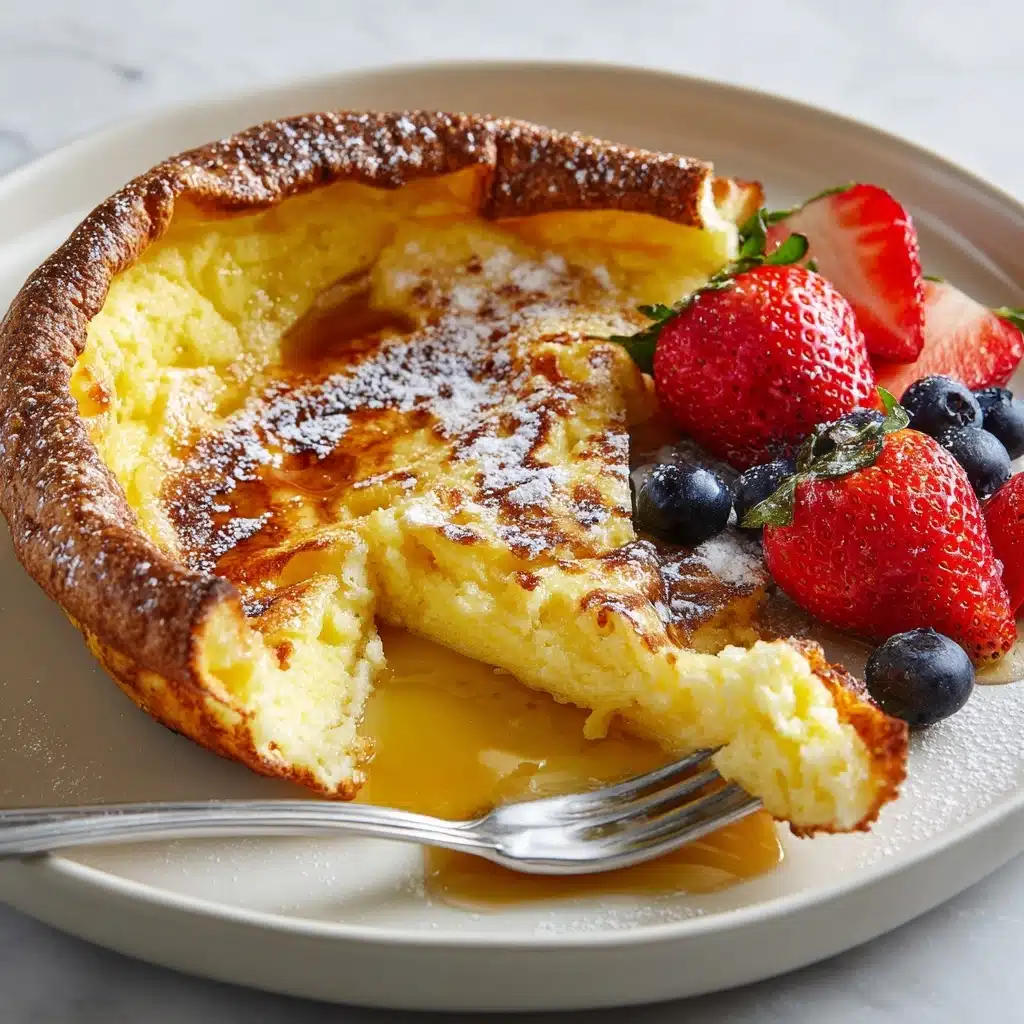
Ingredients You’ll Need
What truly makes German Pancakes special is their simplicity. Just a handful of humble ingredients, perfectly balanced, create that irresistible magic — each element plays a crucial role in building flavor, structure, and that signature puff.
- Eggs: Six large eggs create the lift and custard-like texture that defines German Pancakes.
- Milk: One cup of whole milk makes the batter light, tender, and helps everything blend smoothly.
- All-purpose flour: The backbone of this dish, flour binds everything together and gives the finished pancake its structure.
- Salt: Just a dash, to balance flavors and bring out the gentle sweetness of the eggs and vanilla.
- Vanilla extract: Adds a cozy, aromatic note that makes the pancakes extra inviting.
- Butter: Five tablespoons melt in the pan, infusing the pancakes with rich flavor and ensuring those gloriously crispy edges.
How to Make German Pancakes
Step 1: Preheat the Oven
Start by heating your oven to 425 degrees F. Getting the oven hot before anything else is key—the blast of heat is what makes German Pancakes rise into those delightfully dramatic pockets and curls. Don’t skip this! The sizzle guarantees the perfect puffy showstopper.
Step 2: Melt the Butter
Place the butter directly in an ungreased 9×13-inch metal baking dish and let it melt in the oven as it preheats. Keep a close eye; you want melted, not browned butter. This step gives the batter that instant, sizzling start and infuses every corner with golden, buttery flavor.
Step 3: Blend the Batter
In a blender, combine eggs, milk, flour, salt, and vanilla extract. Blend until the mixture is completely smooth—no lumps allowed! Using a blender ensures everything is incorporated evenly, making your German Pancakes lofty and tender throughout.
Step 4: Pour and Bake
Once the butter has fully melted, pour the blended batter evenly into the hot baking dish over the butter. Don’t stir. Pop the dish back into the oven immediately. Let the magic happen for 22 to 27 minutes—watch as the edges puff high and turn deeply golden. The dramatic rise is always a hit!
Step 5: Serve Hot
Remove your German Pancake from the oven right as it reaches peak puffiness. Sprinkle generously with powdered sugar and drizzle with your favorite syrup. Enjoy immediately—the pancake will start to settle as it cools, but it’s just as delicious!
How to Serve German Pancakes
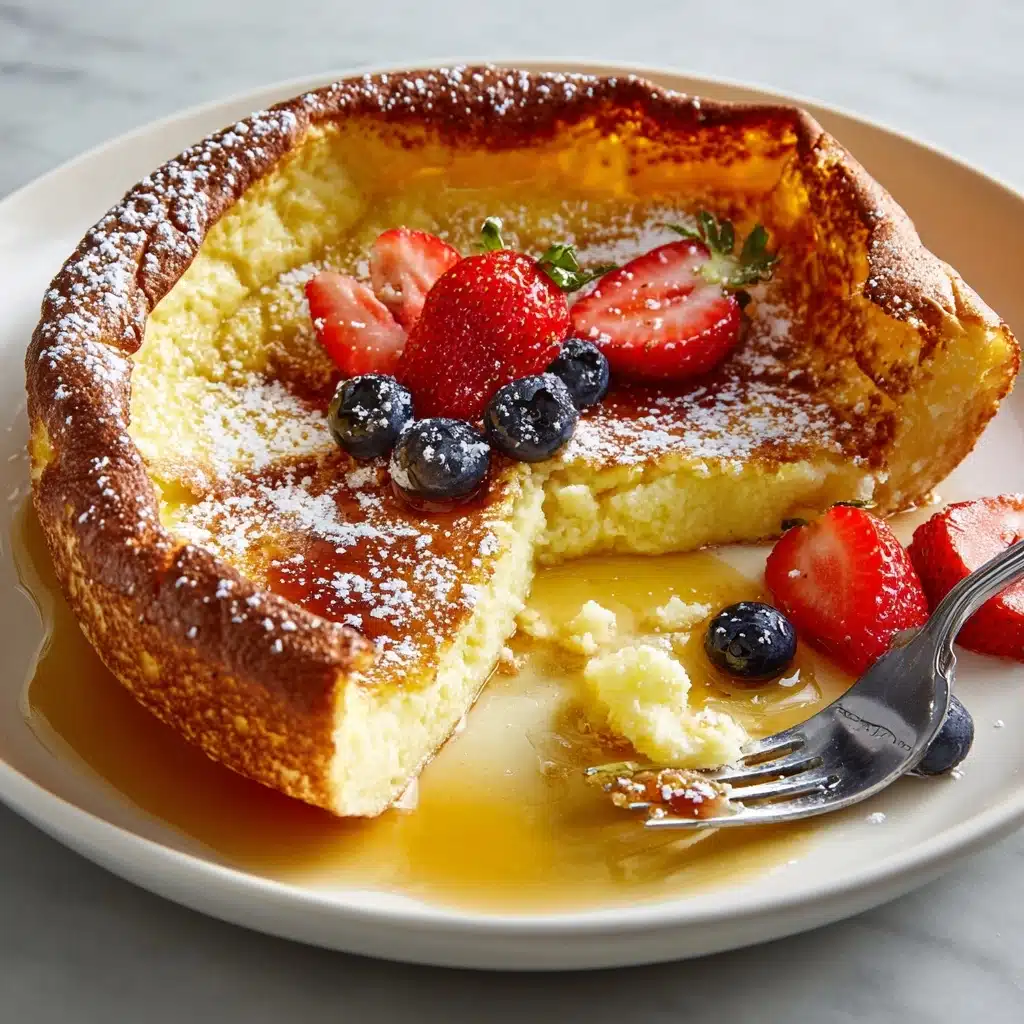
Garnishes
The classic finish for German Pancakes is a dusting of powdered sugar and a pour of maple syrup, but don’t stop there! Fresh berries, a dollop of whipped cream, sliced bananas, or a squeeze of lemon juice all add fresh flavor and a pop of color. Add toasted nuts for crunch, or a swirl of Nutella for chocolate lovers.
Side Dishes
Balance the airy richness of German Pancakes with savory sides like crispy bacon, turkey sausage, or even scrambled eggs. For an all-out brunch, add a bowl of fresh fruit salad or serve with Greek yogurt for extra protein. The versatility of German Pancakes makes them a wonderful centerpiece to build your breakfast spread around.
Creative Ways to Present
Cut your German Pancakes into wedges or squares, arrange them on a large platter, and let guests top their own pieces buffet-style. For a party, serve mini versions in muffin tins! Or get fancy by stacking slices with a different filling between each layer (think whipped cream and berries, or lemon curd and raspberries) for a showstopping brunch dessert.
Make Ahead and Storage
Storing Leftovers
If you have leftover German Pancakes (lucky you!), let them cool completely, then store in an airtight container in the refrigerator. They’ll keep nicely for up to 2 days without losing too much of their delightful texture.
Freezing
German Pancakes freeze surprisingly well! Cut into portions, wrap each tightly in plastic wrap or foil, then freeze. Stored in a freezer-safe bag, your pancakes will be ready for a quick breakfast anytime for up to three months.
Reheating
For best results, reheat German Pancake portions in a 350 degree F oven, uncovered, for about 10 minutes until warmed through and edges are slightly crisped again. The microwave works in a pinch, but the oven helps revive some of that original puff and texture.
FAQs
Can I make German Pancakes without a blender?
Absolutely! If you don’t have a blender, simply whisk the ingredients together by hand until no lumps remain—you’re aiming for a totally smooth, pourable batter. A handheld electric mixer also does the trick.
Why didn’t my German Pancakes puff up?
The most common culprit is an oven that isn’t hot enough. Make sure your oven is fully preheated before you start, and use a metal pan for maximum heat transfer. Also, don’t let the batter sit—pour it into the melted butter while everything is still hot for that signature puff.
Can I add flavors or mix-ins to the batter?
You can absolutely experiment! A touch of citrus zest (lemon or orange) adds brightness, or swap in almond extract for a different twist. Just avoid chunky mix-ins, as they can weigh the pancake down and prevent it from rising as much.
Are German Pancakes the same as Dutch Babies?
Yes, they’re essentially the same classic baked pancake, sometimes called by different names in different regions. Both are eggy, puffy, and baked in a hot dish or skillet. However, German Pancakes are typically made in a 9×13 pan, whereas Dutch Babies are often baked in a round skillet.
Can I double the recipe for a larger group?
Absolutely—just use two 9×13-inch baking dishes and rotate their position halfway through baking for even puff and browning. Your whole crowd will get a warm, dramatic serving of German Pancakes fresh from the oven.
Final Thoughts
Nothing brightens a table or brings people together quite like a pan of German Pancakes, dramatically puffed and golden from the oven. I hope this recipe inspires you to gather your favorite toppings and savor every last buttery bite. You deserve a breakfast this fun and delicious—go make German Pancakes your new family tradition!
PrintGerman Pancakes Recipe
German Pancakes are a delightful breakfast treat that puff up beautifully in the oven, creating a light and airy texture. Topped with powdered sugar and syrup, they are a perfect combination of sweet flavors.
- Prep Time: 10 minutes
- Cook Time: 25 minutes
- Total Time: 35 minutes
- Yield: 4 servings 1x
- Category: Breakfast
- Method: Baking
- Cuisine: German
- Diet: Vegetarian
Ingredients
Eggs
- 6 large eggs
Milk
- 1 cup milk (240 ml)
All-Purpose Flour
- 1 cup all-purpose flour (120 g)
Salt
- dash salt
Vanilla Extract
- 1 teaspoon vanilla extract (5 ml)
Butter
- 5 Tablespoons butter (70 g)
Instructions
- Preheat oven to 425 degrees F.
As oven preheats, put the butter in an un-greased 9×13-in. metal baking dish and place in oven, just until melted.
- Place the eggs, milk, flour, salt, and vanilla in a blender; cover and process until smooth.
Pour batter into baking dish, over melted butter.
- Bake for 22-27 minutes or until edges are golden brown and puffy.
- To serve, sprinkle generously with powdered sugar and syrup.
Nutrition
- Serving Size: 1 pancake
- Calories: 210
- Sugar: 8g
- Sodium: 210mg
- Fat: 12g
- Saturated Fat: 6g
- Unsaturated Fat: 4g
- Trans Fat: 0g
- Carbohydrates: 18g
- Fiber: 0.5g
- Protein: 7g
- Cholesterol: 215mg
Keywords: German Pancakes, Breakfast, Pancakes, Sweet Breakfast, Easy Pancakes

